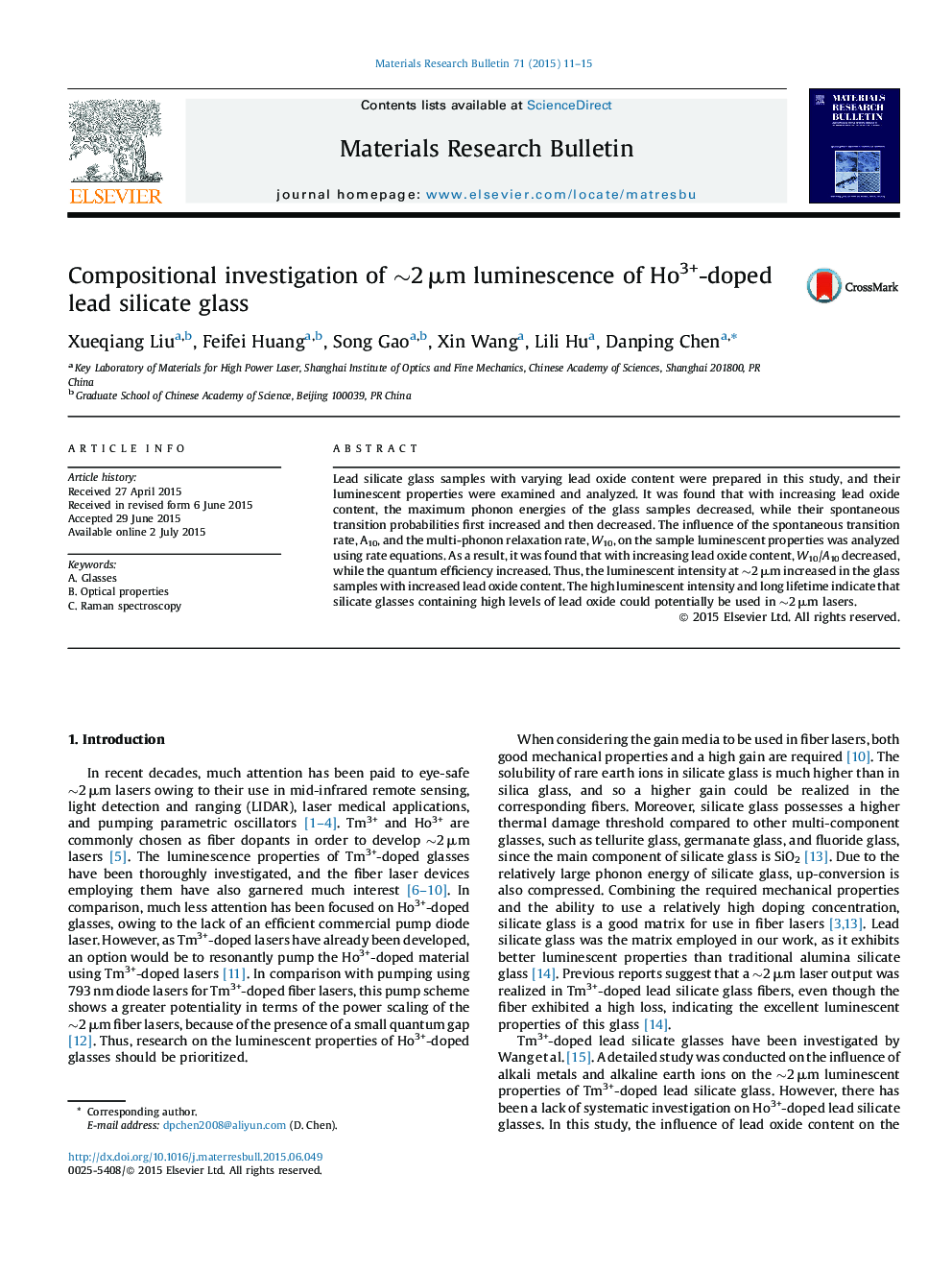| Article ID | Journal | Published Year | Pages | File Type |
|---|---|---|---|---|
| 1487226 | Materials Research Bulletin | 2015 | 5 Pages |
•With increment of lead oxide, maximum phonon energy in lead silicate glass decreased.•∼2 μm luminescent intensity of Ho3+ increased with increment of lead oxide.•Lowest lead oxide content glass possesses highest quantum efficiency due to low maximum phonon energy.
Lead silicate glass samples with varying lead oxide content were prepared in this study, and their luminescent properties were examined and analyzed. It was found that with increasing lead oxide content, the maximum phonon energies of the glass samples decreased, while their spontaneous transition probabilities first increased and then decreased. The influence of the spontaneous transition rate, A10, and the multi-phonon relaxation rate, W10, on the sample luminescent properties was analyzed using rate equations. As a result, it was found that with increasing lead oxide content, W10/A10 decreased, while the quantum efficiency increased. Thus, the luminescent intensity at ∼2 μm increased in the glass samples with increased lead oxide content. The high luminescent intensity and long lifetime indicate that silicate glasses containing high levels of lead oxide could potentially be used in ∼2 μm lasers.
Graphical abstractHo3+-doped lead silicate glass with lowest maximum phonon energy possesses highest ∼2 μm luminescence intensity.Figure optionsDownload full-size imageDownload as PowerPoint slide
